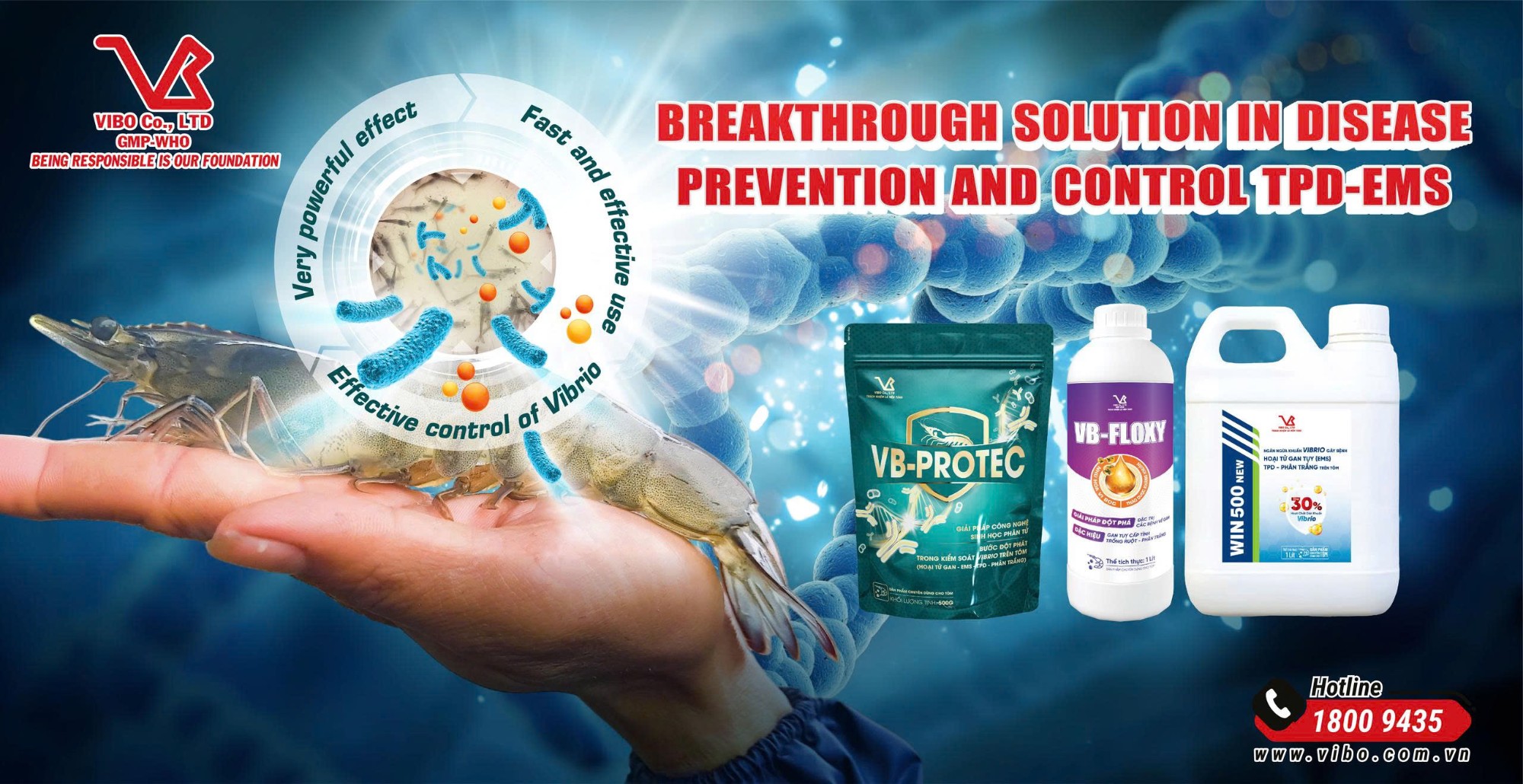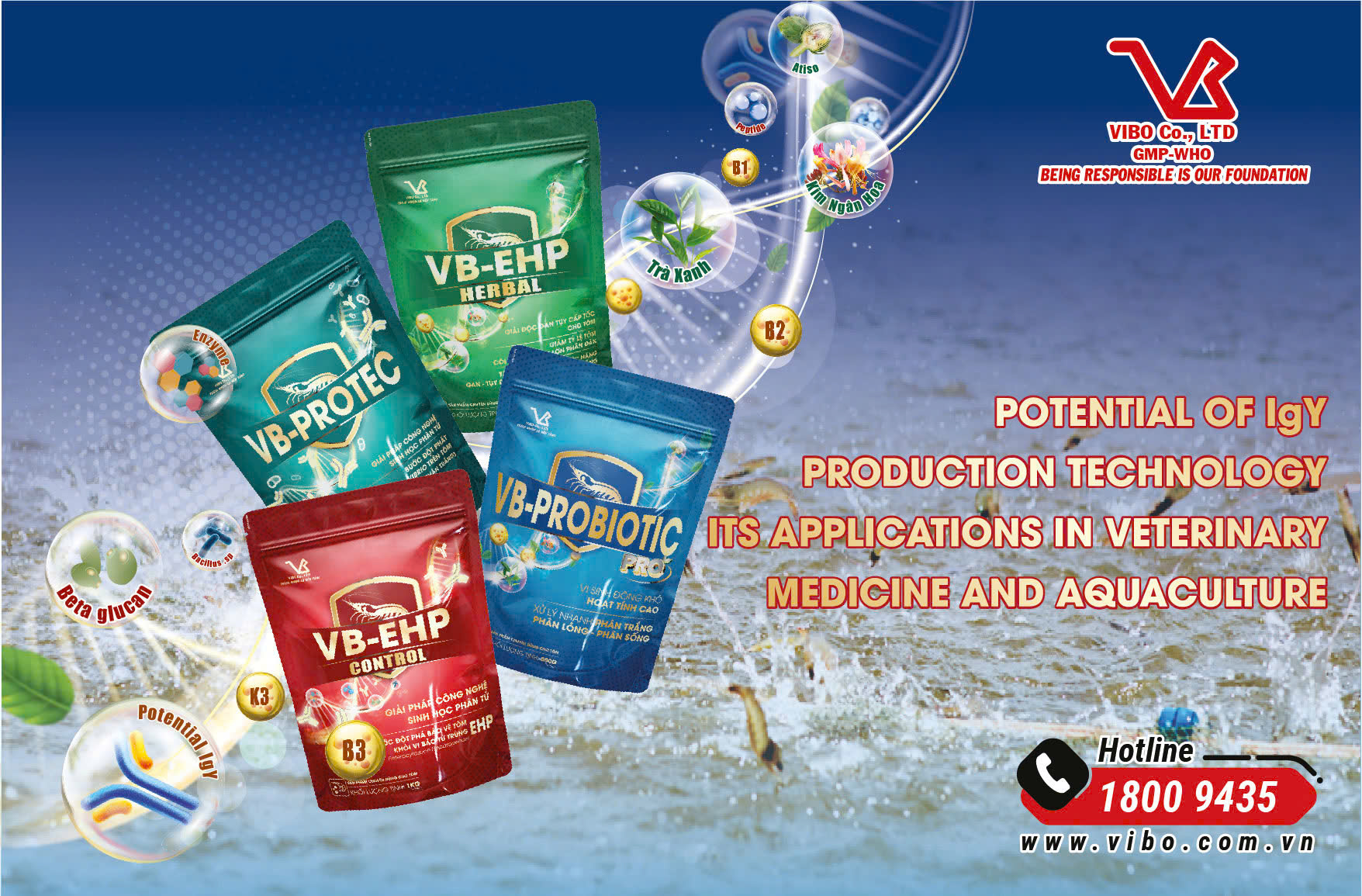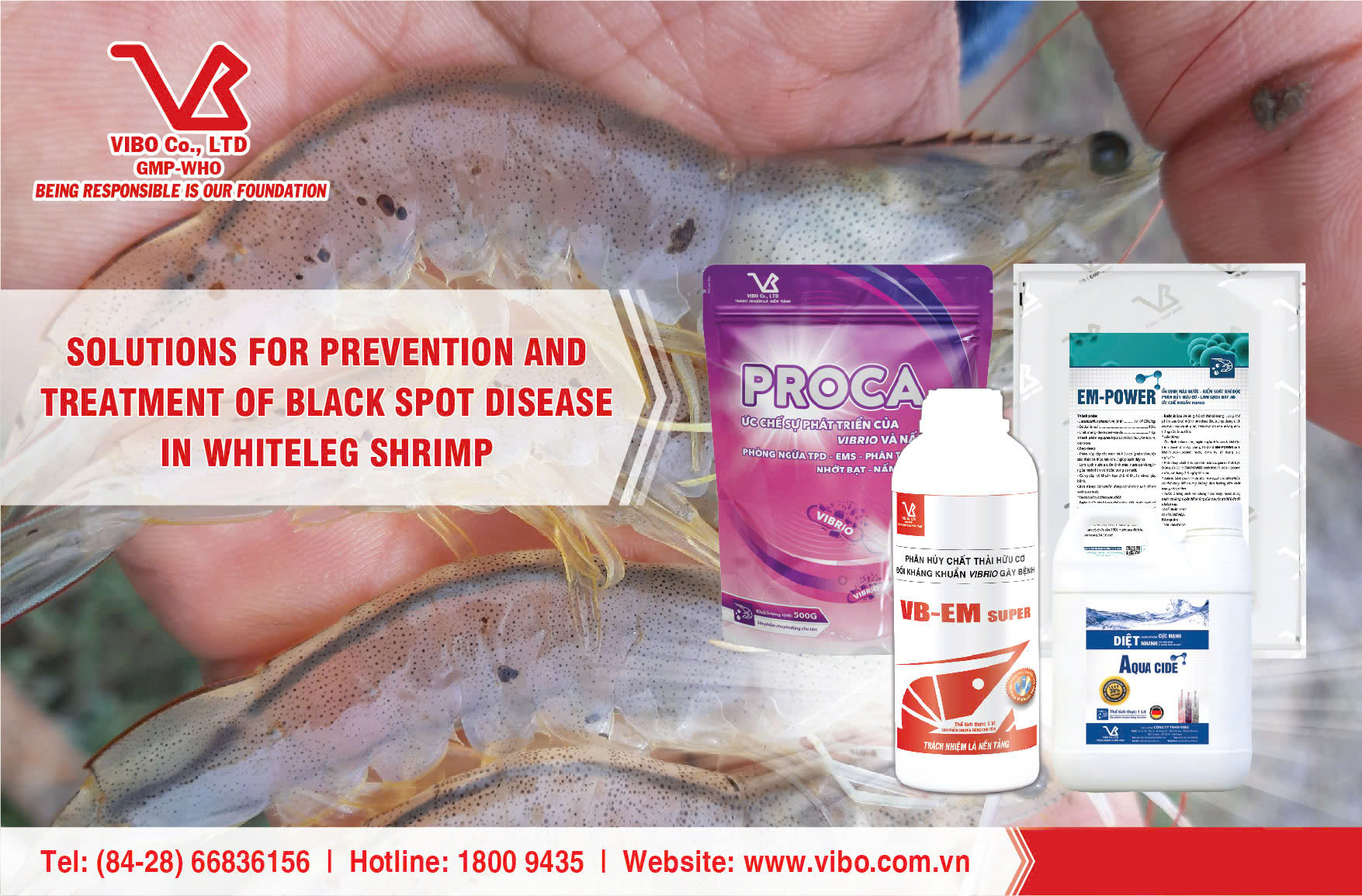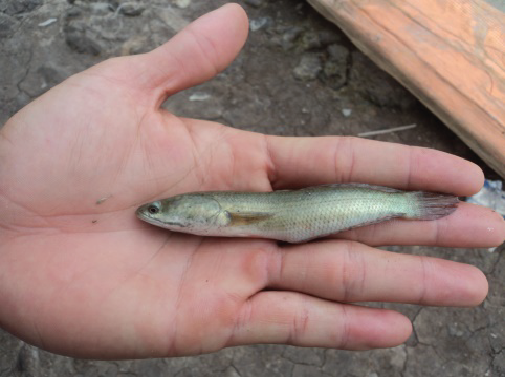- Address: Lot No. 20, Zone G, D1 Street, An Ha Industrial Park, Tan Vinh Loc Commune, Ho Chi Minh City
- Phone: (84-28) 668.36156 / 668.36158
- Hotline: 1800.9435
- Fax: (84-28) 3620.4694
- Email: vibo@vibo.com.vn
- Website https://vibo.com.vn/
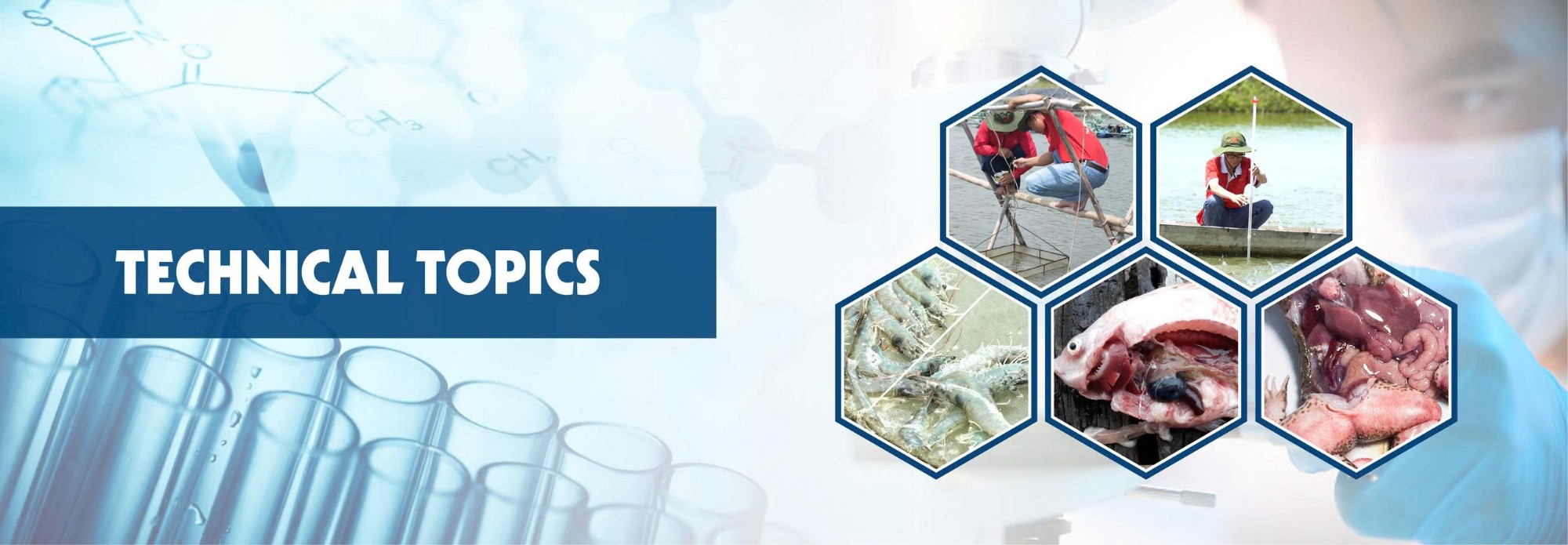
POTENTIAL OF IgY PRODUCTION TECHNOLOGY AND ITS APPLICATIONS IN VETERINARY MEDICINE AND AQUACULTURE
1. WHAT IS IgY ANTIBODY?
IgY (immunoglobulin of the yolk) is an immune globulin produced by hens to protect chicks during the first weeks of life against emerging pathogens. It is functionally equivalent to immunoglobulin G (IgG) found in the colostrum of mammals. IgY is a completely natural antibody product.
Historical Overview
In 1893, Klemperer first described an experiment demonstrating that immunizing hens led to the transfer of pathogen-specific antibodies into the egg yolk. At that time, there were no scientific applications for this discovery. However, as animal welfare later became an important ethical concern in the scientific community, Klemperer’s findings began to receive significant attention.
Over the next 20 years, more researchers recognized the importance of his work. From the 1980s onward, egg-yolk antibodies gained broader practical applications. In 1996, the IgY technology described by Dr. Claus Staak became the internationally accepted term for producing and using IgY.
Also in 1996 (Schade et al.), the European Centre for the Validation of Alternative Methods (ECVAM) recommended using IgY instead of mammalian IgG to reduce pain and invasiveness associated with blood collection. In 1999, IgY technology was approved by the Swiss Veterinary Authority as an alternative method supporting animal welfare.
Between 2010–2019, 370 IgY-related patents were filed by research centers, universities, and private companies:
-
56% for therapeutic applications
-
33% for diagnostic purposes
-
11% for purification technologies
Therapeutic patents covered applications in both human medicine (63%) and veterinary medicine (37%). China and the United States hold the largest number of IgY patent filings.
2. BENEFITS OF IgY TECHNOLOGY
A primary goal of animal welfare is to reduce painful procedures. IgY technology meets this requirement because antibodies are collected non-invasively through egg collection rather than blood sampling, which causes stress and pain in mammals.
IgY technology also offers significant economic advantages since raising hens is far more cost-effective than raising rabbits, sheep, or horses for antibody production.
Moreover, a hen’s antibody production capacity is comparable to that of large mammals such as sheep or goats.
A single hen can be considered a small “antibody factory,” producing over 22.5 g of total IgY per year.
This large and renewable antibody source opens new opportunities in IgY applications such as:
-
immunotherapy,
-
prophylactic immunization,
-
and treatment of various viral and bacterial infections
in veterinary, aquaculture, and even human medicine.
3. WHY CAN IgY INHIBIT PATHOGENS?
Research has shown that IgY can be produced to target specific pathogens directly.
These IgY antibodies work by blocking bacterial adhesion/virulence factors or by coating bacterial cell surfaces, thereby neutralizing their biological functions.
Mechanisms of IgY action against pathogens:
-
Inhibits microbial adhesion to host cell surfaces.
-
Blocks viral entry, preventing cell-to-cell spread.
-
Agglutinates bacteria, making them immobile and easier to eliminate through the gut.
-
Inhibits key bacterial enzymes.
-
Neutralizes toxins produced by pathogens
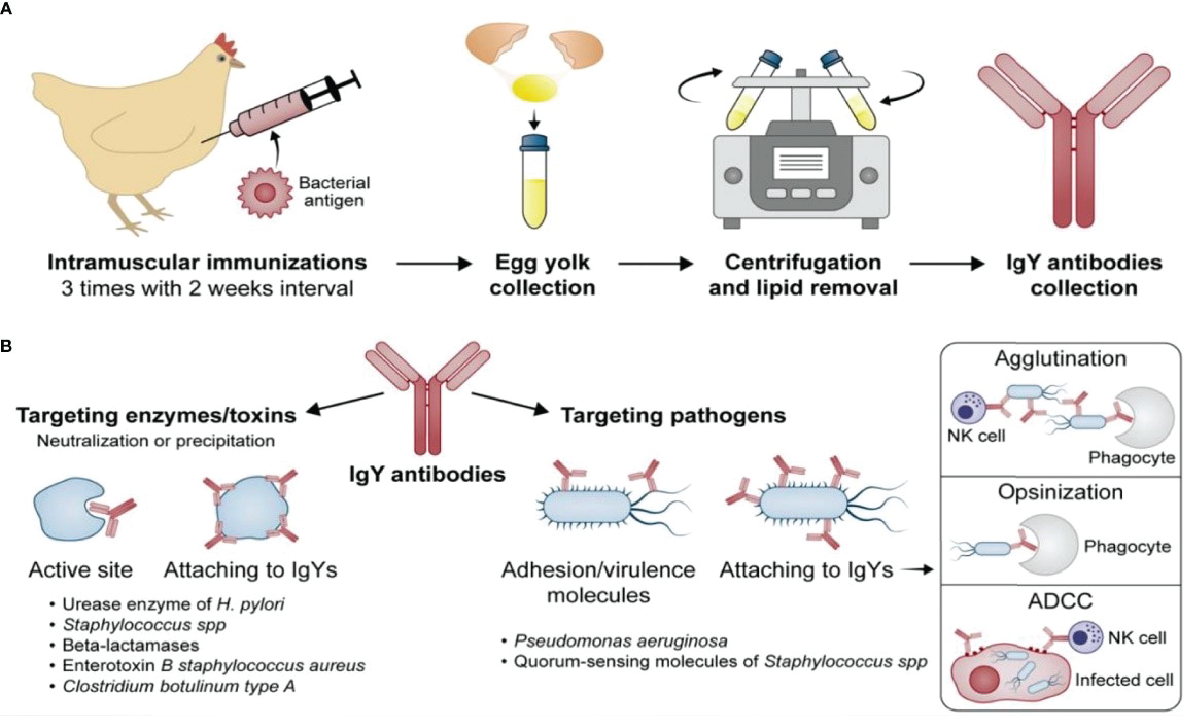
4. ADVANTAGES OF IgY ANTIBODIES
- Highly specific and targeted activity.
- Acts locally and delivers rapid effects.
- Does not cause antibiotic resistance or unwanted side effects.
- Safe for animals and the environment.
- Targets only harmful pathogens without affecting beneficial microbiota.
5. KEY APPLICATION STUDIES OF IgY
IgY as a promising solution to antibiotic resistance
Bacterial infections pose major economic challenges in all stages of livestock production and aquaculture, and are also a significant source of foodborne disease transmission to humans.
Whole eggs or powdered yolk have been used in veterinary medicine as a low-cost IgY source, especially for treating intestinal infections.
Examples of successful applications:
-
Treatment and prevention of diarrhea in calves and piglets using IgY against E. coli (K88, K99), rotavirus, and coronavirus.
These studies demonstrated strong therapeutic and preventive effects. -
Sunwoo et al. (2002) showed that IgY strongly inhibited the growth of E. coli O157:H7 by binding to bacterial surface antigens and altering bacterial membrane structure.
-
IgY has proven effective in:
-
controlling E. coli infections,
-
improving gut health and growth performance in broiler chickens,
-
treating Salmonella infections.
-
-
IgY targeting infectious bursal disease virus (IBDV, Gumboro disease) showed efficacy in both prevention and treatment in poultry.
-
IgY-based veterinary products for treating duck viral hepatitis have been licensed in China (Gui-rong & Yun-ying, 2011).

6. Applications in young-animal nutrition
- Newborn animals (calves, piglets, puppies, kittens) are born with immature immune systems.
- When deprived of adequate maternal colostrum, they become highly susceptible to infection.
- Antibiotics were widely used prophylactically, but due to rising antibiotic resistance, this practice is now restricted.
- IgY offers a safe alternative to support passive immunity in young animals.
6.1. IgY TECHNOLOGY IN AQUACULTURE
IgY antibodies have been successfully developed for prevention and control of major infectious diseases in aquaculture species.
Excessive antibiotic use in aquaculture has caused:
-
economic losses,
-
development of multidrug-resistant bacteria,
-
and international trade barriers.
IgY is considered a promising antibiotic alternative.
6.2. Why IgY is valuable in aquatic animals
Fish possess both innate and adaptive immunity, but crustaceans rely entirely on innate immunity, making vaccination ineffective.
Therefore, passive immunization—including IgY technology—is gaining strong interest and practical research applications.
6.3. Examples in aquatic disease control
1. White Spot Syndrome Virus (WSSV) in shrimp
- WSSV is a highly lethal dsDNA virus.
- Its major envelope proteins—VP28 and VP19—play critical roles in early infection.
- Studies show that IgY targeting VP28 and VP19 can neutralize WSSV, and thus may be used for WSSV prevention in shrimp.
2. Acute Hepatopancreatic Necrosis Disease (AHPND) – Vibrio parahaemolyticus
- AHPND can cause up to 100% mortality at the postlarval stage.
- Gao (2016) demonstrated that IgY protects shrimp against AHPND-causing V. parahaemolyticus.
3. Edwardsiellosis (Edwardsiella tarda) in fish
- Studies show that IgY can provide passive protection against E. tarda infections.
- There is currently no commercial vaccine, and antibiotic overuse has produced resistant strains.
- This pathogen causes severe economic losses in high-value cultured fish species.
Vibo Technical Department







